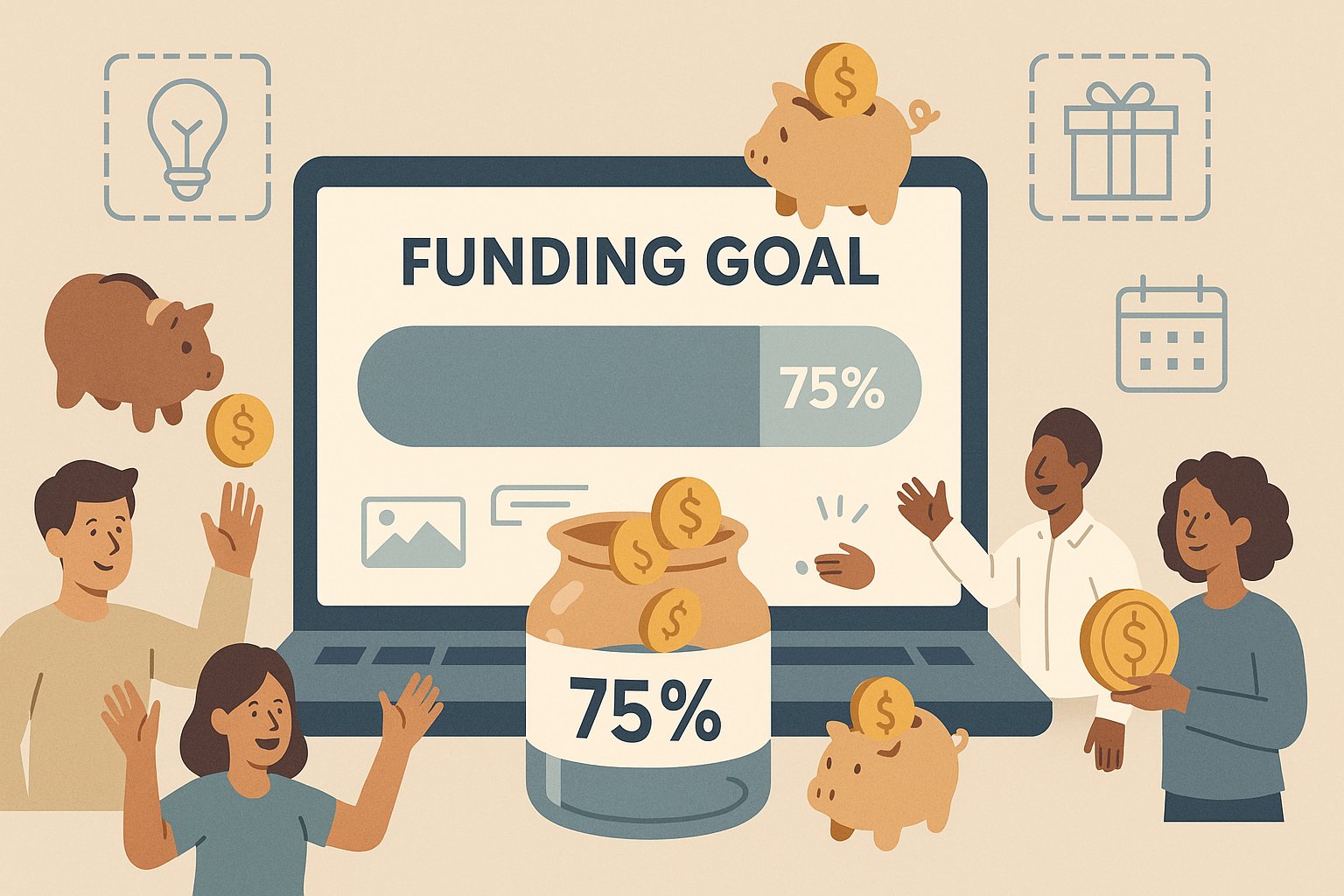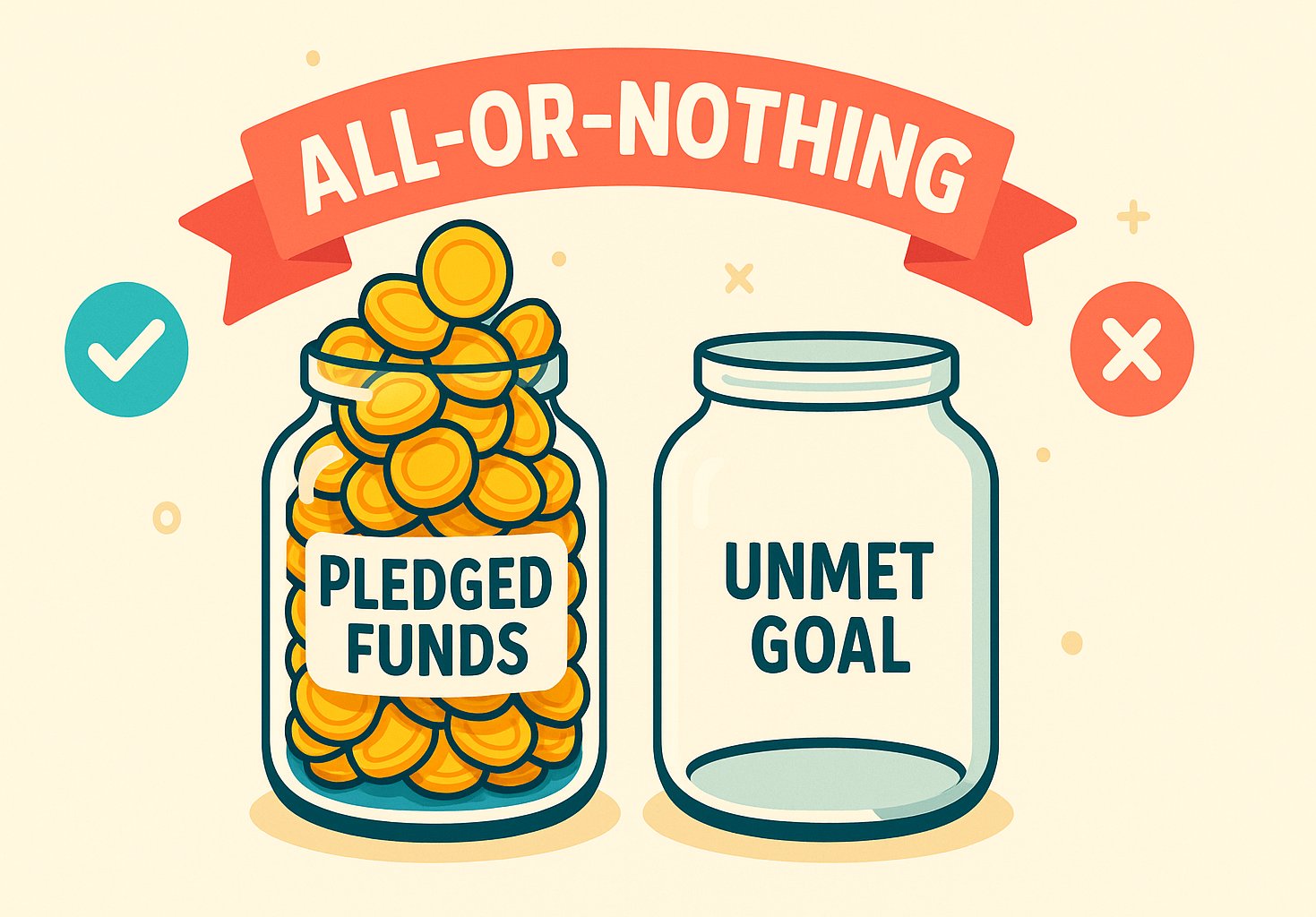The Power Behind Your Campaign’s North Star
In the dynamic world of crowdfunding, the term “funding goal” stands as a beacon guiding both creators and supporters toward a shared vision. It represents the specific amount of money a campaign needs to succeed—whether that means bringing a revolutionary gadget to market, financing a community project, or launching an early-stage startup. Unlike traditional fundraising, where budgets and projections often remain behind closed doors, crowdfunding demands transparency. Setting and communicating a clear funding goal not only defines the scope of your ambitions but also establishes trust with your backers. It signals that you have meticulously calculated production costs, fulfillment logistics, platform fees, and unforeseen contingencies. An effective funding goal does more than cover expenses; it catalyzes momentum. It creates urgency, inspires confidence, and sets expectations for the entire campaign lifecycle. Backers rally around concrete targets, watching progress bars inch toward milestones with collective excitement. Meanwhile, creators can measure traction in real time, pivot strategies when necessary, and celebrate stretch achievements that extend beyond the original ask. However, the process of determining a funding goal is as much an art as a science. Aim too low, and you risk running out of capital mid-project; set the bar too high, and potential supporters may doubt feasibility or hesitate to pledge. In this comprehensive guide, we’ll demystify every facet of the funding goal: what it entails, why it matters, how to calculate it accurately, and how to leverage it as a strategic tool to engage backers and drive campaign success. Whether you’re a first-time creator or a seasoned entrepreneur exploring new models, understanding the nuances of the funding goal will empower you to chart a confident course through the crowdfunding landscape.
What Is a Funding Goal?
A funding goal in crowdfunding is the minimum amount of capital a project creator aims to raise during the campaign period. It serves as the financial benchmark for viability: if the goal is met—or exceeded—within the designated timeframe, the campaign is deemed successful, and funds are released for project execution. In the case of all-or-nothing platforms like Kickstarter, failing to reach the funding goal means no money changes hands; backers are not charged, and creators receive zero funds. Conversely, flexible funding models allow creators to keep whatever they raise, regardless of whether they hit the target, though this may carry its own risks if the amount falls short of production requirements.
The funding goal is prominently displayed on every campaign page, often accompanied by a real-time progress bar that shows percentage funded and time remaining. This transparent presentation transforms abstract figures into tangible momentum, motivating backers to contribute as they witness goals being within reach. It also informs contributors about the scale of the endeavor, helping them decide on pledge amounts that align with the campaign’s ambition. A well-defined funding goal therefore becomes the focal point of the campaign narrative, tying backer enthusiasm directly to measurable milestones and providing a clear framework for managing expectations.
Why Setting the Right Funding Goal Matters
Choosing the optimal funding goal is a balancing act that demands strategic foresight. On one hand, setting the goal too low can leave creators scrambling for additional funds after the campaign ends, leading to production delays or compromised quality. Backers who pledged based on initial promises may feel misled, eroding trust and harming long-term reputation. On the other hand, an overly ambitious target can deter potential supporters. When backers perceive a goal as unattainable, they may hesitate to contribute, fearing their pledge won’t make a meaningful impact. This phenomenon, sometimes dubbed “goal fatigue,” can stall campaign momentum and reduce overall engagement.
Beyond psychological effects, the funding goal directly impacts campaign budgeting. Every line item—from manufacturing and shipping costs to platform fees and taxes—needs to be accounted for within the goal. Transparent breakdowns of expense categories reinforce credibility, helping backers understand exactly where their money goes. Additionally, an accurately calibrated goal allows creators to plan for stretch funding. Surpassing the initial ask can unlock enhanced features, expanded production runs, or new reward tiers, creating waves of excitement and maintaining backer enthusiasm well after the first target is met. In essence, the right funding goal acts as the strategic fulcrum upon which fundraising success pivots.
Factors Influencing Funding Goal Determination
Determining a funding goal requires a comprehensive assessment of all project-related costs and contingencies. Production expenses form the foundation: research and development, prototyping, material sourcing, and bulk manufacturing quotes must all be compiled with real-world estimates. Logistics expenses—shipping materials, warehousing, packaging design, and international fulfillment—add another layer of complexity, particularly for campaigns shipping globally. Platform fees, which typically range from five to eight percent, and payment processing fees—often around three to five percent—must be baked into the goal to avoid eroding net proceeds.
Beyond direct expenses, creators should factor in marketing and promotional costs. Advertising budgets for social media campaigns, influencer partnerships, and press outreach can significantly impact funding timelines. Legal and administrative fees—intellectual property registrations, business licensing, and accounting services—also play critical roles. Finally, contingency buffers of 10 to 20 percent safeguard against unforeseen challenges such as raw material price fluctuations, shipping delays, or additional tooling requirements. By methodically enumerating and validating each cost category, creators can ensure their funding goal reflects the true capital needed to bring the project from concept to completion.
Funding Goal Strategies: Balancing Minimum and Stretch Targets
A compelling campaign often employs a two-tiered strategy: an initial minimum goal and a stretch funding target. The minimum goal represents the baseline needed to finance the core project scope—covering essential manufacturing costs, fulfillment, and fees. This figure must be realistic and achievable, instilling confidence among potential backers that success is within grasp. When the minimum goal is met quickly, it creates a surge of social proof, attracting media attention and catalyzing further backer contributions.
Stretch targets, set at incremental levels beyond the baseline, unlock expanded ambitions—additional product variants, enhanced features, charitable partnerships, or environmental sustainability upgrades. These secondary milestones keep the campaign narrative alive, encouraging backers to continue pledging even after the baseline is secured. Creators can design stretch goals to appeal to different backer segments, offering unique incentives for specific funding tiers. By transparently communicating how extra funds will translate into tangible enhancements, campaigns maintain momentum and motivate stakeholders to push funding levels higher.
Impact of Funding Goals on Backer Psychology
Backers are both rational investors and emotional participants. The funding goal serves as a psychological anchor, influencing how supporters perceive the campaign’s feasibility and their individual impact. When a project is close to its funding goal—say, 80 to 90 percent funded—backers often experience a sense of urgency and are more inclined to pledge, believing their contribution will tip the scales toward success. Conversely, very low percentages can discourage early contributions, creating a vicious cycle of underfunding.
Campaign creators can leverage this behavioral insight by timing reward tier releases, update announcements, and social proof posts to coincide with critical funding milestones. Celebrating incremental achievements with backer shout-outs and gratitude messages fuels positive feedback loops. Additionally, showing the previous campaign’s performance—especially if similar projects reached or surpassed goals—builds credibility and reduces perceived risk. By understanding and harnessing the psychological dynamics surrounding funding goal progress, creators can craft messaging strategies that resonate with both analytical and emotionally driven backers.
Funding Goals Across Crowdfunding Models
While the concept of a funding goal is universal to crowdfunding, its implications vary across models. In reward-based campaigns, meeting the funding goal triggers the production phase, and backers expect promised rewards in exchange for their pledges. In donation-based platforms, the goal often represents a total needed for a humanitarian cause or community project, with donors seeking social impact rather than material returns. Equity crowdfunding goals denote the amount of capital offered in exchange for company shares, where investors evaluate risk and potential returns against the valuation.
Debt-based crowdfunding campaigns set funding goals that correspond to loan amounts borrowers require, and reaching these targets allows capital to be disbursed under agreed interest terms. Royalty-based models use funding goals to define the total amount of revenue-sharing obligations the creator can sustain. In every variation, the funding goal marks the point at which platform rules execute payments or resource allocations. Creators must tailor goal-setting methodologies to their specific model, ensuring that backer or investor expectations align precisely with the campaign’s operational framework and legal requirements.
Tools for Calculating and Validating Your Funding Goal
Accurate goal-setting benefits from both spreadsheet diligence and specialized crowdfunding calculators. Many campaign consultants offer templates that automate expense category inputs—such as unit production costs, shipping rates, and platform fees—and output recommended funding goal ranges. Online calculators factor in average shipment destinations, currency conversion rates, and tax obligations to refine estimates further.
Project management tools with built-in budget modules also help creators visually map costs against funding targets and track deviations as the campaign unfolds. Pre-launch surveys and pilot funding rounds can validate assumptions by soliciting backer feedback on proposed reward tiers and gauging willingness to pay. Additionally, consulting with manufacturers for bulk quotes and logistics providers for shipping estimates before launch ensures real-world accuracy. By triangulating data from multiple sources—spreadsheets, calculators, pilot campaigns, and vendor inputs—creators can approach goal-setting with confidence, minimizing the risk of undercapitalization or backer dissatisfaction.
Common Pitfalls in Setting Funding Goals
Even experienced creators can stumble when determining their funding goal. Underestimating shipping fees for international backers is a frequent oversight: small variances in package weight or destination zones can compound rapidly across hundreds or thousands of orders. Ignoring platform and payment processing fees similarly eats into net funds, leaving projects financially short.
Another common error is failing to account for taxes and duties in cross-border campaigns, which can trigger unexpected liabilities post-campaign. Optimistic production timelines without contingency buffers expose campaigns to delays that frustrate backers and erode goodwill. Some creators also set their goals based on aspirational desires rather than concrete cost analyses, resulting in lofty targets that backers perceive as unattainable. To avoid these pitfalls, it’s essential to engage in rigorous pre-launch planning, involve industry experts in cost estimation, and build in conservative buffers that protect against uncertainty.
Case Studies: Learning from Successes and Setbacks
Examining real-world campaigns offers invaluable lessons in funding goal strategy. A successful tech gadget campaign once set a modest funding goal that covered only the first production run, surpassing it within hours and unlocking multiple stretch goals that introduced additional color options and enhanced software features. The transparency of the goal breakdown and rapid milestone updates galvanized backers to keep pledging, ultimately raising more than ten times the original goal.
In contrast, an indie board game campaign set an overly ambitious funding goal without securing early community buy-in. Weeks into the campaign, backers felt the target was far out of reach, resulting in stalled momentum and an eventual failure to hit the goal. Post-mortem analyses revealed that a smaller initial goal with a clear path to stretch expansions would have energized supporters and demonstrated achievable success. Such case studies underscore the critical importance of aligning funding goals with realistic backer expectations and proven demand signals.
Optimizing Funding Goals Through Iteration and Feedback
A funding goal shouldn’t be static. Pre-launch communities—whether on social media, forums, or dedicated email lists—provide fertile ground for refining goal assumptions. Creators can present draft funding goals and reward structures to these audiences, soliciting candid feedback on price sensitivity, reward attractiveness, and perceived project scope. Early surveys and soft-launch campaigns help gauge enthusiasm and uncover hidden costs or market insights.
During the live campaign, ongoing analytics—tracking pledge velocity, peak contribution times, and backer demographics—inform adjustments to messaging and reward tiers. If progress stalls, creators might introduce limited-time incentives or repackage stretch goals to reignite interest. Post-campaign retrospectives capture lessons learned, feeding into more accurate goal-setting for future endeavors. By embracing a culture of iteration and feedback, creators transform funding goals from static benchmarks into dynamic tools that evolve with backer sentiment and market realities.
Conclusion: Mastering Your Funding Goal for Crowdfunding Triumph
A well-crafted funding goal is the cornerstone of any successful crowdfunding campaign. It embodies the financial roadmap, guiding creators through budgeting, production planning, and fulfillment logistics. For backers, it provides a crystal-clear understanding of project scope, engendering trust and clarity. Setting this goal demands meticulous cost analysis, strategic psychology, and agile iteration informed by real-world data and community feedback.
As crowdfunding continues to grow and diversify—spanning reward-based pre-sales, equity investments, philanthropic donations, peer-to-peer loans, and revenue-sharing arrangements—the principles of effective goal-setting remain constant. Accurate budgeting, transparent communication, and responsive adjustments transform funding goals from simple numeric targets into strategic levers that propel campaigns to new heights. By mastering the art and science of determining the perfect funding goal, creators can ignite backer enthusiasm, sustain momentum, and ultimately bring their boldest visions to life. Whether you’re launching your very first project or refining a seasoned crowdfunding strategy, understanding and optimizing your funding goal will position you for crowdfunding triumph.




